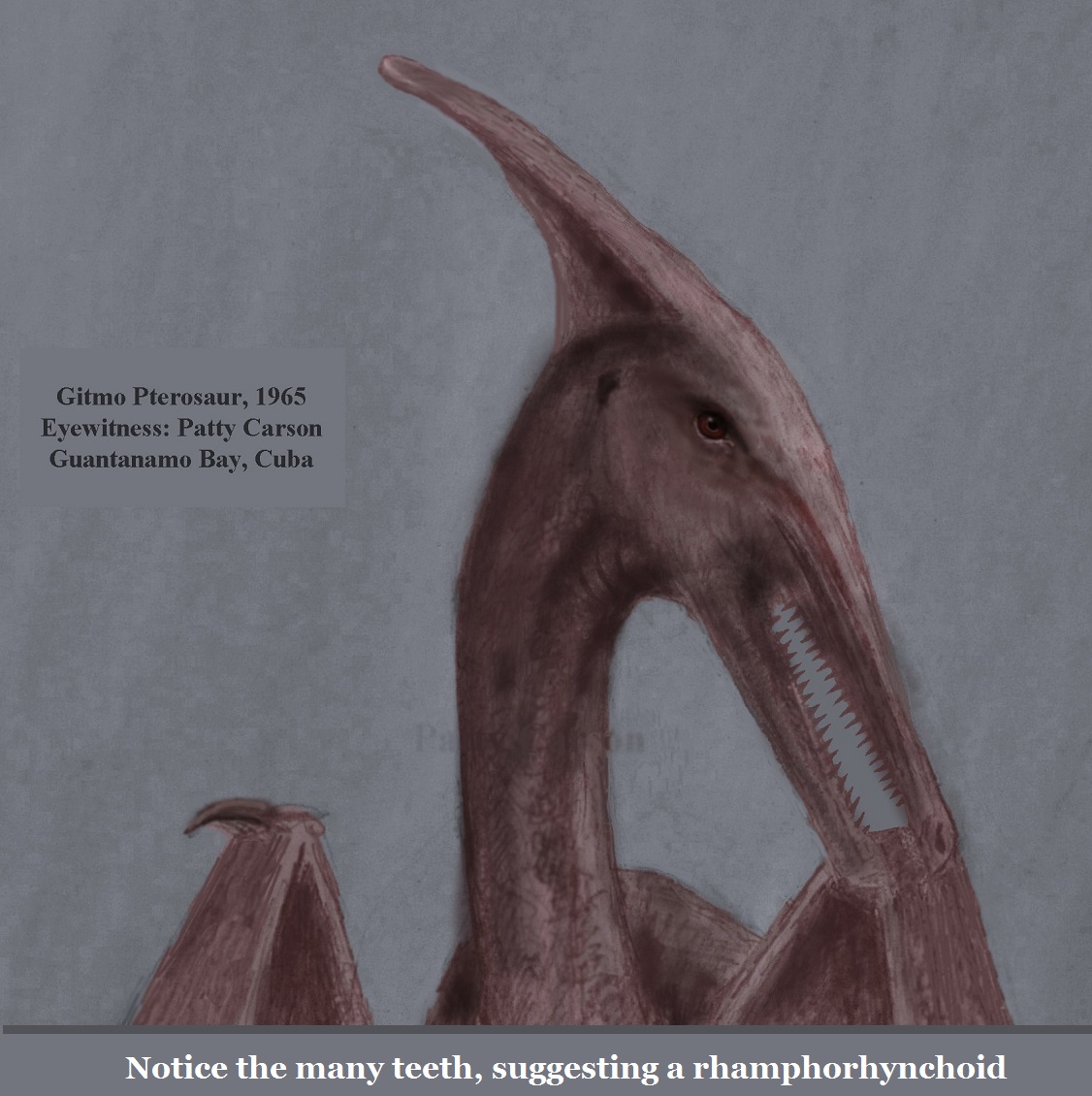By the investigative journalist Jonathan Whitcomb
Some years ago, I estimated the total number of persons living worldwide who had some kind of encounter with a living pterosaur, yet we need to keep in mind that most of those persons had just vague encounters at night, with no clear view of any form or features of the animals: between 7 million and 128 million humans who had mostly brief shadowy encounters. I make no guess for how many of the featherless flying creatures themselves now live on this wonderful planet; compared with many animals, they are uncommon if not rare. We need more practical numbers.
Those many millions of persons living around the world, mentioned above—the vast majority of them had only brief encounters with modern pterosaurs, many of which involved things like quick flyovers at night. (A person could assume it was only an owl or a bat.) We now look at the kind of sightings in which apparent pterosaurs were seen more clearly.
A few days ago, I pondered how to come to a more accurate estimate for the number of eyewitnesses we might have in the United States. I came to realize that not all significant sightings should be put into one category, and I eventually defined three types. The differences were not just in how the animals appeared during encounters but in how the human eyewitnesses reacted:
- Type #1: With this kind of sighting, the eyewitness will tell at least one person about it, generally with a word or phrase like “pterodactyl,” “dinosaur bird,” “ropen,” “pterosaur,” “prehistoric bird,” etc.
- Type #2: The eyewitness will be impressed that the flying creature appeared to be a pterosaur, whatever the word that came to mind, but the person will react differently than the type #1 eyewitness, at least at first. Instead of telling family and friends that he or she saw a “pterodactyl,” the person will either keep quiet about it or simply say that a strange-looking bird was seen (or words to that effect). Generally only after learning about another person’s encounter with a living pterosaur (usually type-1) will the person become emboldened and come forward and report his or her first impression.
- Type #3: This is generally the least significant encounter, for the person may not see enough to even think of the possibility that a living pterosaur was involved. All the persons now living on this planet who have had such an encounter—they may number between about 7 million and about 128 million.
Let’s get to more significant numbers. To the best of my ability to approximate the numbers, after calculating what was plainly in front of me to calculate, I suggest that in the United States about 150,000 persons now living have had either a type-1 or a type-2 encounter with a modern pterosaur. The great majority of those are in type-2, perhaps more than 75% of the 150,000.
That means that maybe less than 35,000 eyewitnesses in the USA have told someone that they had seen something like a living pterosaur, although not many of them would use that word: more likely something like “pterodactyl.” Those are the type-1 eyewitnesses.
The type-2 eyewitnesses almost never report their encounters to a cryptozoologist, yet I (Jonathan Whitcomb) have received at least a few reports from this kind of eyewitness, over the past 16 years.
How did I arrive at my estimates for the number of Americans who had type-1 and type-2 sightings? See the blog post linked to further down: “How Many Americans Have Seen a Modern Pterosaur?” To be brief, an important part of the calculation involved considering a significant number of eyewitness accounts in which the eyewitness mentioned someone else (sometimes a family member) who had a similar sighting. Many of the secondary encounters were in a different year and in a different place than the primary sightings.
On a different note, have you never read anything about any of those sightings in your local newspaper? Maybe you missed a page or missed an issue of that publication, for pterosaur encounters are sometimes reported in newspapers. It’s also possible your newspaper has not yet featured anything that would appear so strange. That subject, however, deserves its own post.
.
“Why Pterodactyls in Kentucky and Ohio?” – Youtube video
###
.
How Many Americans Have Seen a Modern Pterosaur?
I have received hundreds of eyewitness reports of apparent modern pterosaurs over the past 16 years, most of them from eyewitnesses in the USA. Every dozen or so reports has more than just a description of the animal: a reference to another person who has seen something similar, whether called “pterodactyl” or “flying dinosaur” or “dragon” or “prehistoric flying creature.” The other person may be a family member or a friend or someone else.
.
Persons who have searched for living pterosaurs
This Texan [Paul Nation] has traveled to Papua New Guinea, to search for living pterosaurs, more often than any other American: five times, and in 2006, he videotaped two indavas.
Many other explorers are mention here, Americans who have gone on expeditions in search of modern pterosaurs.
.
Sightings of living pterosaurs
The Girl who saw a Flying Dinosaur is for readers of about eight to fourteen years old. Strange as that title may appear, for a nonfiction book, this is indeed nonfiction. [paperback book]
.
Youtube video with sightings in Kansas
.
Here’s another one, this video about living-pterosaur encounters in the United States of America in general:
.



